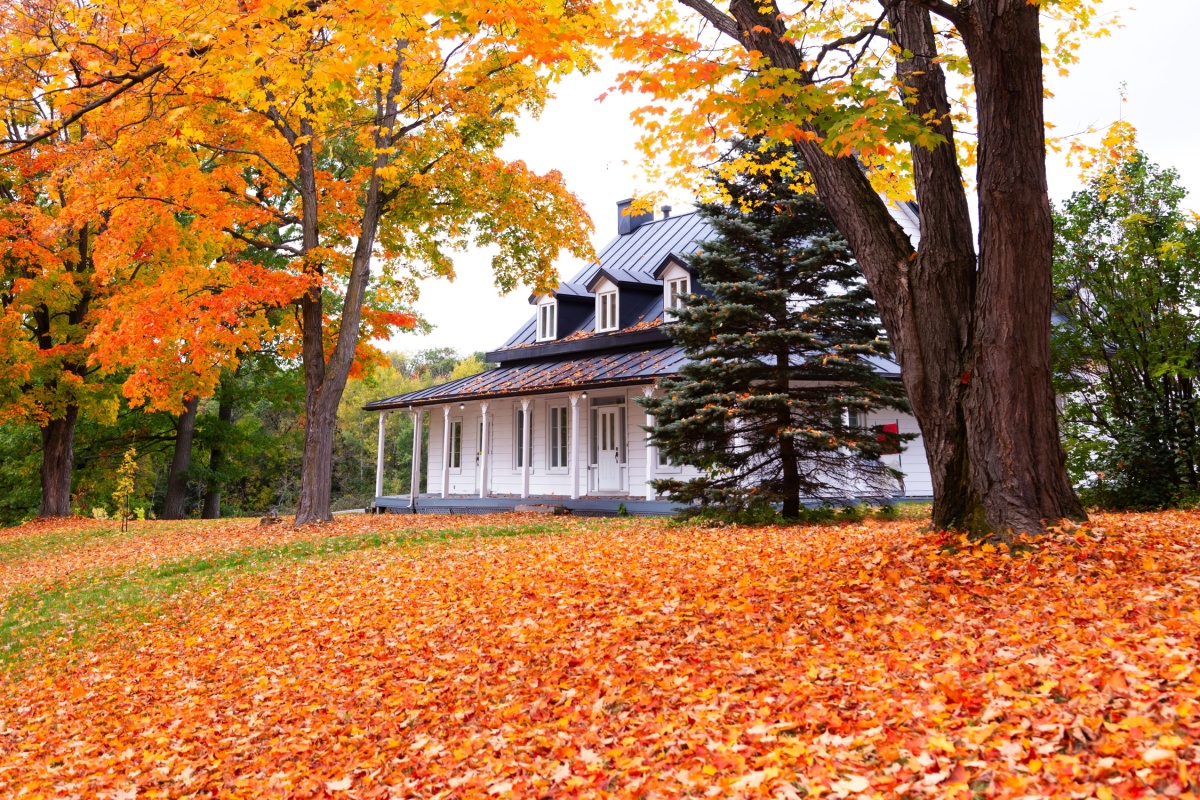The Science of Fall Foliage: Why Trees Change Color in Autumn

One of the greatest appeals of fall is its beautiful range of colors, from vibrant reds and striking oranges to brilliant yellows and rich browns. While this sight is certainly something to behold, the change can also tell us a great deal about a tree’s health and the conditions of its environment.
Below, our certified arborists in Springfield, Missouri, discuss the science of fall foliage and explain when your tree’s colorful transformation is normal and when it might mean it’s time to reach out to a professional.
The Science Behind Changing Leaf Colors in the Fall
Throughout the spring and summer, tree leaves appear green thanks to chlorophyll. This pigment captures sunlight and fuels the process of photosynthesis (through which the tree gets its food). As the days grow shorter and temperatures begin to cool, however, chlorophyll production slows and eventually stops, causing the green pigments to fade away. When this happens, other pigments finally take center stage.
Why Tree Leaves Turn Yellow & Orange
As the green fades from deciduous trees, pigments called carotenoids (the same family of pigments that gives carrots their orange color and corn its yellow hue) form the brilliant yellows and oranges that we associate with autumn landscapes. These pigments are present in the leaves throughout the growing season, where they assist in photosynthesis, but they are left undetected simply because they are overshadowed by the abundance of green chlorophyll.
Where the Reds & Purples of Fall Leaves Come From
Leaves with red and purple hues get their colors from an entirely different group of pigments called anthocyanins. Unlike carotenoids, anthocyanins are not present in the leaves during the summer. They are actively produced in the fall under specific conditions. For example, when the tree prepares to shed its leaves, it forms a layer of cells at the base of the leaf stem to seal it off from the branch. This layer, called the abscission layer, can trap sugars within the leaf. When these trapped sugars are exposed to bright sunlight, they react to form anthocyanins, resulting in the deep reds and purples seen in trees like red maples, dogwoods, and sumacs.
What Affects the Intensity of Fall Colors?
Have you ever noticed that the autumn colors seem more spectacular in some years than in others? This variation is due to the weather conditions in the weeks leading up to and during the color change.
The Key to a Beautiful Fall
The most brilliant fall displays are produced by a succession of warm, sunny days and cool, crisp (but not freezing) nights. This is because the sunny days allow the leaves to produce plenty of sugar, while the cool nights prevent those sugars from flowing out of the leaves through the veins. This high concentration of sugar, combined with bright sunlight, leads to a massive production of anthocyanin pigments, resulting in a fiery red and purple spectacle.
The Reason for Dull Fall Colors
Conversely, a stretch of overcast days and warm nights will lead to less intense colors because the lack of sunlight reduces sugar production. In these years, the fall foliage will be dominated by the more subdued yellows and browns from the carotenoid pigments.
An early, hard frost can also bring the color season to an abrupt end. If temperatures drop too low, it will kill the leaves before they have a chance to reach their peak color.
Summer weather plays a role in determining fall leaf color, too. For example, a severe drought can stress a tree, causing it to change color and drop its leaves prematurely.
Why Some Trees Don’t Change Color or Lose Their Leaves
While most deciduous trees undergo a dramatic color change, not all trees follow this script. Evergreens such as pines, spruces, and cedars keep their green needles year-round, thanks to a waxy coating and special adaptations that allow them to photosynthesize even in winter.
Some deciduous species may also skip the colorful display. Certain trees drop their leaves quickly after chlorophyll breaks down, so instead of seeing brilliant reds and yellows, you might just notice leaves fading to brown before they fall.
When Early Fall Colors Are Cause for Concern
While a tree changing color in October is a welcome sight, a tree that starts turning in late August or early September can be a sign of trouble. In fact, premature color change often points to stress, which can be caused by:
- Drought Conditions: Trees that don’t get enough water may shut down early to conserve resources.
- Pest infestations: Insects like borers or scale can weaken a tree, prompting an early change in leaf color.
- Diseases: Fungal infections or bacterial issues can interfere with nutrient transport.
- Root Damage: Compacted soil, construction damage, and girdling roots can prevent a tree from accessing water and nutrients.
If you notice that your tree is changing color weeks before others of the same species in your area, it’s a good idea to contact a certified arborist. Early color change is often one of the first visible signs that something is wrong beneath the surface.
Improve Tree Health & Enjoy the Spectacular Displays of Fall Foliage
If you’re concerned about the timing, intensity, or pattern of your tree’s color changes, our certified arborists can perform a comprehensive inspection. We’ll carefully evaluate your tree’s health from root to canopy, looking for signs of stress, disease, or structural issues. Based on our findings, we can offer several plant health care options, including deep-root fertilization to correct nutrient deficiencies, AirSpade services to combat compaction, and targeted treatments for pests and diseases. In this way, we can help you grow and maintain a beautiful tree not just in the fall but all year long.
If you have questions about your trees, contact All About Trees in Springfield, MO, today for a professional consultation!
